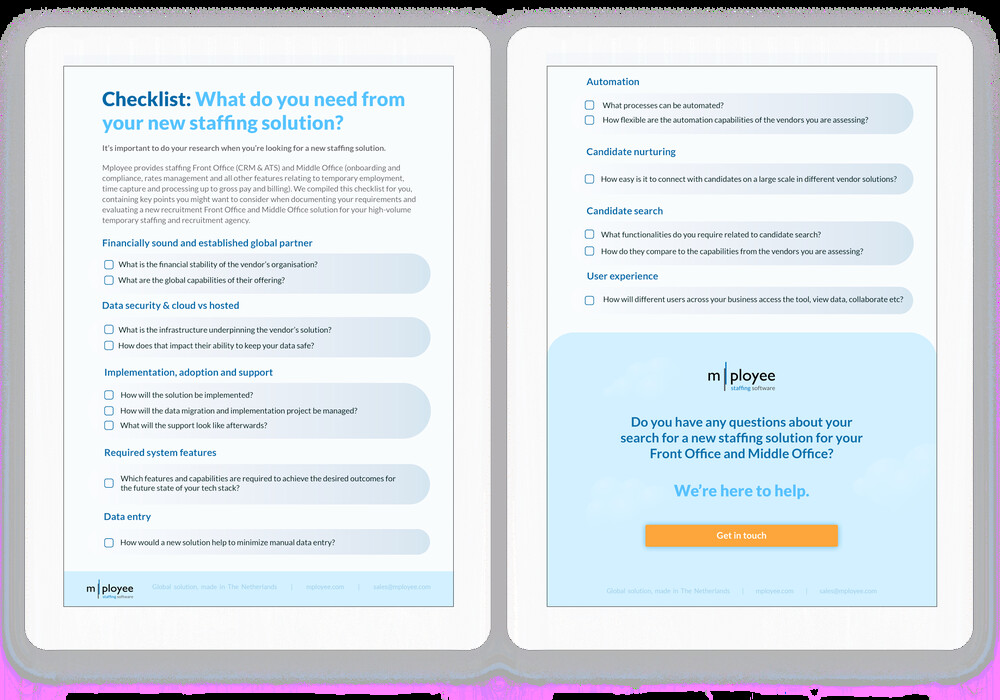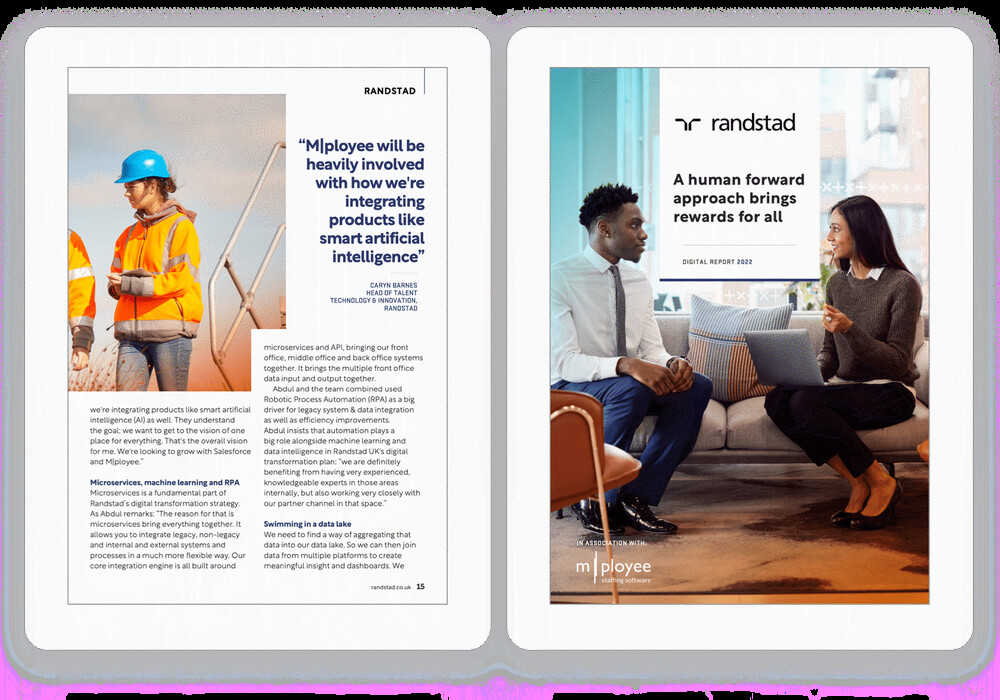Everyone is talking about Artificial Intelligence (AI) these days – and rightly so. AI has the potential to significantly improve recruitment processes and the experience that candidates and clients have with hiring agencies. However, as the sophistication of both the tools available to staffing firms - and the conversations on this topic – increase, there is a growing sense of complexity around making AI-generated and enabled tools work for recruiters.

Despite the growing consensus, though, Artificial Intelligence doesn’t need to be complex or require intricate tailored solutions. There are some quick fixes on the market that will deliver what your recruitment agency needs. However, what is far too often overlooked is that no matter what AI, software or technology integration you invest in, the implementation won’t be as simple as flicking a switch.
If you want to make the most of AI-generated or enabled tools, there are a number of key steps that have to be taken.
Data cleansing is a must
Before implementing any new technology or updating existing software, it is vital to carry out a data cleansing exercise. The quality of your existing information will have a substantial impact on the success of any AI or automation. Without first taking this step, you run the risk of potentially sending irrelevant information to the wrong people, sharing messages with old contact details that result in higher bounce-back rates and possibly damaging relationships. It’s likely that you’ll see a spike in contacts unsubscribing that will need to be explained to the rest of the business and, should consultants see a detrimental impact on their ability to engage with candidates and clients as a result, buy-in from the company will likely drop.
From a GDPR standpoint as well, failure to carry out a data cleansing process in advance of any new systems being implemented could be risky. If information isn’t documented correctly – or more importantly, ‘do not contact’ records are not transferred appropriately to a new platform – you could face a negative fallout from new communication.
What is also perhaps overlooked, though, is the fact that without first reviewing all data and how it is stored, any messages have the potential to appear as obvious AI-generated content. Without the data to inform personalisation of the communication, everything will be overly clinical which will have a detrimental impact on the candidate experience.
Identify what you have and what you need
Building on the above, it is also important to step back and look at what’s already in place and what else is needed. For example, do you have a data strategy in place already? If not, who is going to own the process of creating one to ensure the information you’re collecting remains relevant and fresh?
Look at where data is currently being stored. Is there one single source of truth or do you have disparate systems? If the latter, it’s worth considering where there may be any cross-over that can be collated into fewer platforms. If not, ensure that any new tech is able to be integrated into all necessary systems that already exist.
I would also advise any recruitment agency looking to make the most of AI-generated and enabled technology – or any automation software – to invest time in reviewing what data is being recorded and for what purpose. Remember that Artificial Intelligence will work with the data it is given. If it knows, for example, that certain individuals are nearing the end of a contract, the right communication can be pushed out to these contacts. If this information is unavailable, potential opportunities to reassign a worker could be missed.
Implementation is just the first step
One key point that often comes out in our conversations with recruitment leaders is the fact that implementing AI and adding to your tech stack is not a simple process of rolling out something new across the business and then moving on. This is just the first of many steps in a broader digital and technology strategy that will require regular monitoring, tweaking and adapting.
Having a single point of ownership in the business will help ensure that your tech stack is continuously monitored and updated as needed. Regularly reviewing key metrics will also help identify where improvements can be made. Remember that data can be your best friend – it will show you the habits of your contacts and this information can help AI tools to improve their performance.
It's also important as part of any role out of new automation or technology to ensure that there’s a human verification point in processes. AI-generated content can be great, but equally it has the potential to come across as overly clinical or be too obviously ‘artificial’ in nature. Recruiters need to get into the habit of checking content that’s produced to make sure it resonates with their target audiences and sounds human. Failure to do so could damage crucial relationship.
Getting buy-in across the business for all consultants and, perhaps more importantly, ensuring that they are using the tech and using it correctly, is also an ongoing part of the processes. Some staff may need additional training or refreshers on how to use the tools you’re providing for them. Showcasing successes will also help ensure everyone is onboard with any new tools.
Making AI-generated and enabled tools work for recruiters
Artificial Intelligence can provide significant opportunities for recruitment agencies, but it can be a tough topic to navigate. At Mployee, we are here to help, in fact, we’re running an event on this very subject on 6th March 2024, hosted at the Salesforce Tower in Bishopsgate. If you’re interested in attending, contact Bob@mployee.com for more information.
Want to find out more about how we can help your recruitment firm with our front and mid-office solutions? Contact us today!



